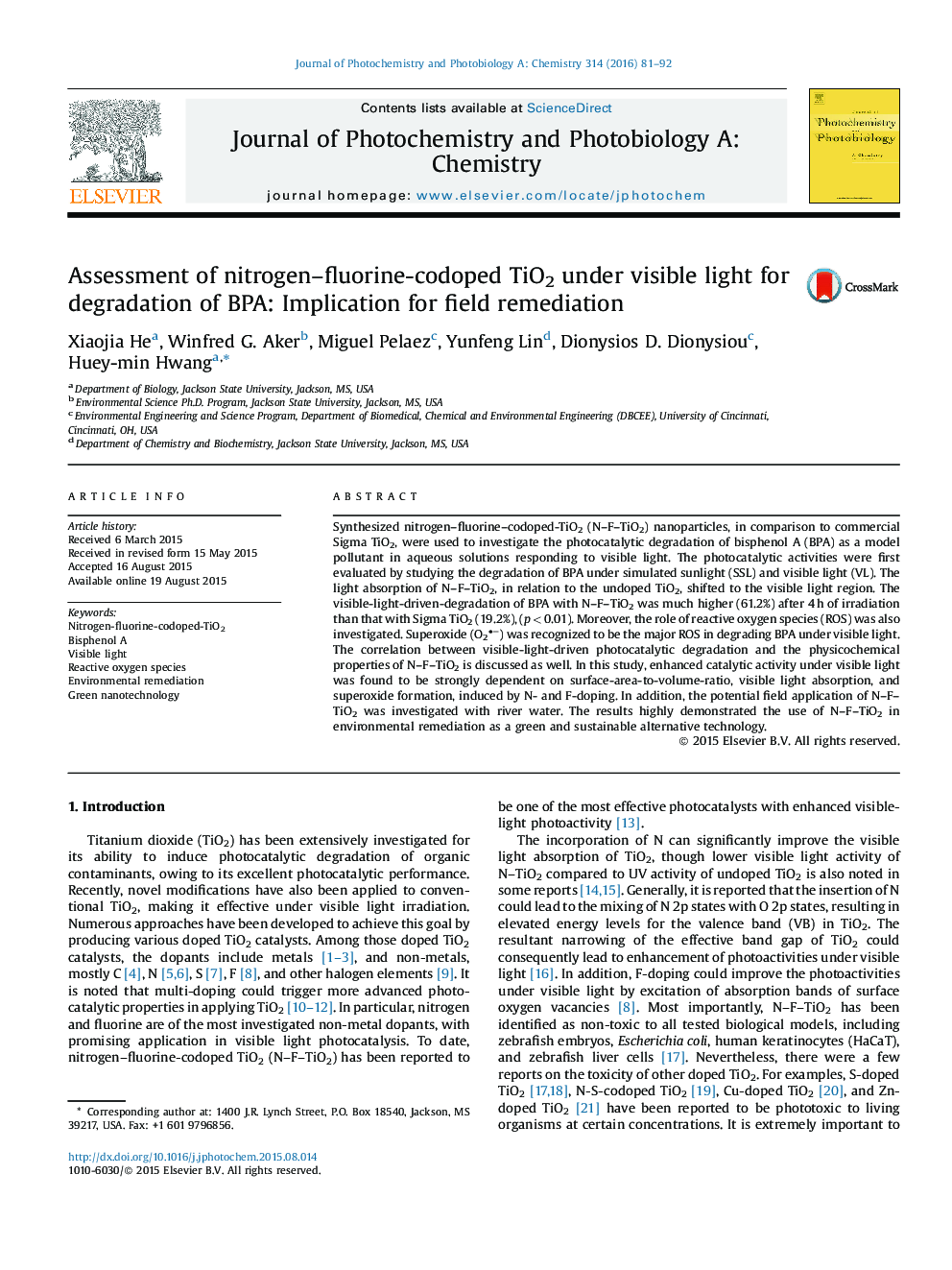| Article ID | Journal | Published Year | Pages | File Type |
|---|---|---|---|---|
| 26369 | Journal of Photochemistry and Photobiology A: Chemistry | 2016 | 12 Pages |
•Synthesized visible light active N–F–TiO2 nanoparticles.•Photocatalytic degradation of BPA by visible light excitation of N–F–TiO2.•Superoxide (O2−) as the major ROS in degrading BPA under visible light.•The potential field application of N–F–TiO2 was investigated with river water.•Use of N–F–TiO2 in environmental remediation as a green and sustainable technology.
Synthesized nitrogen–fluorine–codoped-TiO2 (N–F–TiO2) nanoparticles, in comparison to commercial Sigma TiO2, were used to investigate the photocatalytic degradation of bisphenol A (BPA) as a model pollutant in aqueous solutions responding to visible light. The photocatalytic activities were first evaluated by studying the degradation of BPA under simulated sunlight (SSL) and visible light (VL). The light absorption of N–F–TiO2, in relation to the undoped TiO2, shifted to the visible light region. The visible-light-driven-degradation of BPA with N–F–TiO2 was much higher (61.2%) after 4 h of irradiation than that with Sigma TiO2 (19.2%), (p < 0.01). Moreover, the role of reactive oxygen species (ROS) was also investigated. Superoxide (O2−) was recognized to be the major ROS in degrading BPA under visible light. The correlation between visible-light-driven photocatalytic degradation and the physicochemical properties of N–F–TiO2 is discussed as well. In this study, enhanced catalytic activity under visible light was found to be strongly dependent on surface-area-to-volume-ratio, visible light absorption, and superoxide formation, induced by N- and F-doping. In addition, the potential field application of N–F–TiO2 was investigated with river water. The results highly demonstrated the use of N–F–TiO2 in environmental remediation as a green and sustainable alternative technology.
Graphical abstractFigure optionsDownload full-size imageDownload as PowerPoint slide
